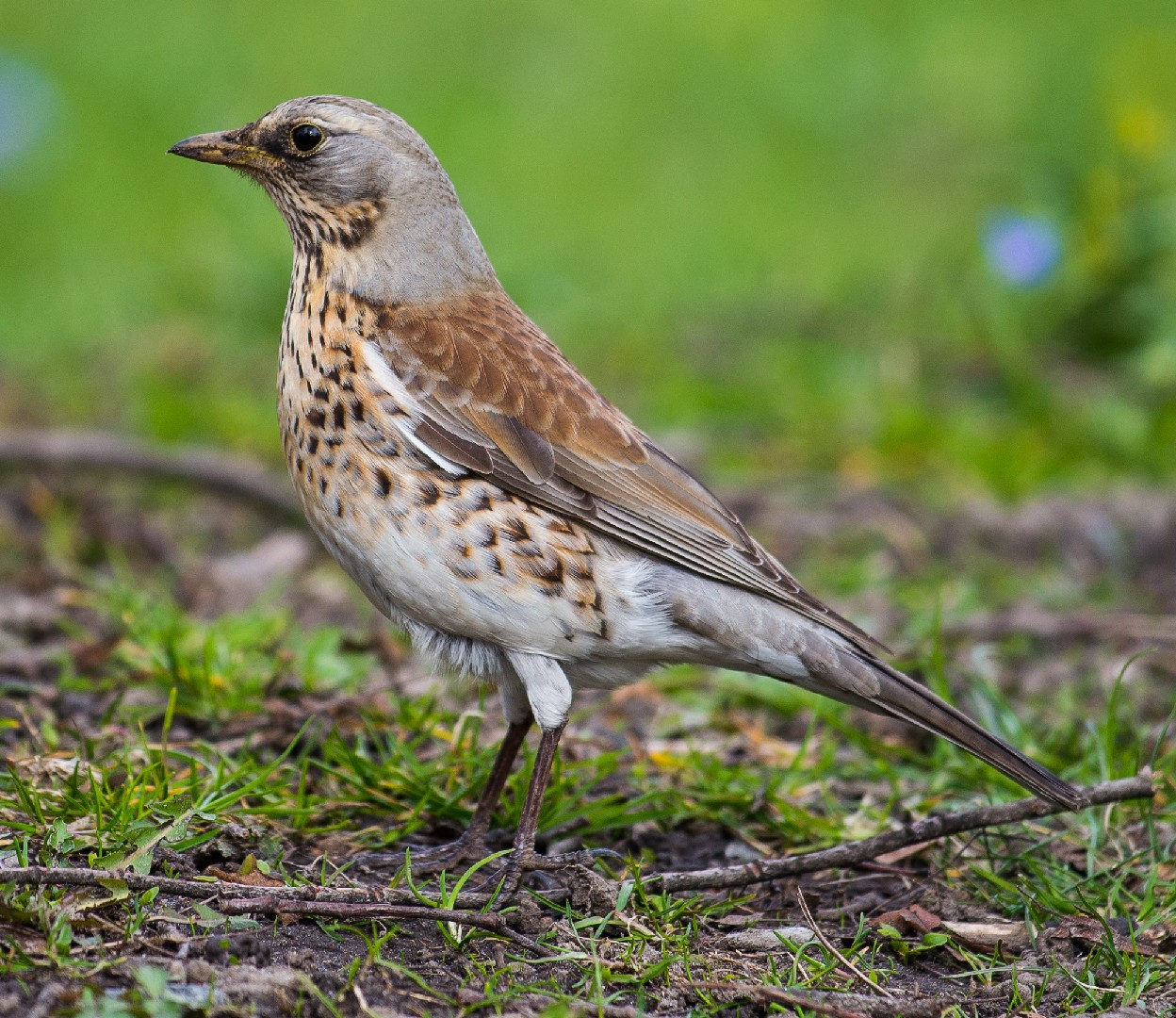Fieldfare
A species of True thrushes Scientific name : Turdus pilaris Genus : True thrushes
Fieldfare, A species of True thrushes
Botanical name: Turdus pilaris
Genus: True thrushes
 Photo By Frankie Fouganthin , used under CC-BY-SA-4.0 /Cropped and compressed from original
Photo By Frankie Fouganthin , used under CC-BY-SA-4.0 /Cropped and compressed from original Description
It is not uncommon to see flocks of fieldfare numbering in the hundreds during the winter season, inhabiting urban and suburban areas. It is a social bird and one of the largest of its species. Its upright pose gives it an imposing appearance and it uses hopping motions to move forward on the ground.
Size
24 - 27 cm
Life Expectancy
18 years
Nest Placement
Tree
Feeding Habits
Fieldfare's omnivorous diet consists of invertebrates such as snails, earthworms, and insects, transitioning to berries, fruit, and seeds in autumn and winter. Fieldfare forages in various habitats, showing a preference for certain berries and scavenging for fallen apples and crops.
Habitat
The fieldfare inhabits areas where forest meets open country, typically found in boreal forests mixed with pine and birch. This species adapts to a variety of environments, from scrublands and alpine tundra to urban parks and gardens. During breeding, they opt for locales with permanent grass, whereas in the winter, lowland open habitats such as pastures and fields near woodlands become prevalent with communal roosts in woody thickets or occasionally on the ground.
Dite type
Omnivorous
People often ask
Migration Overview
Migration southwards from the breeding range starts in October but the bulk of birds arrive in the United Kingdom in November. Some of these are still on passage and carry on into continental Europe but others remain. The passage-migrants return in April and they and the resident migrants depart from the United Kingdom mostly by early May.
General Info
Feeding Habits
Bird food type
Bird Feeder Type

Platform
Sounds
Call
Recording location: Belgium
Call
Recording location: Belgium
Song
Recording location: Netherlands
Distribution Area
The fieldfare is a migratory species with a palearctic distribution. It breeds in northern Norway, northern Sweden, Finland, Belgium, Germany, Switzerland, Austria, the Czech Republic, Slovakia, Hungary, Poland and Siberia as far east as Transbaikal, the Aldan River and the Tian Shan Mountains in North West China. Its winter range extends through West and South Europe to North Africa, though it is uncommon in the Mediterranean region. Eastern populations migrate to Anatolia, Israel, Iran and Northwest India, and occasionally Northeast India. 
Species Status
The population size appears to be stable and the bird is not believed to approach the thresholds for the population decline criteria of the IUCN Red List of Threatened Species (i. e., declining more than 30% in ten years or three generations), and is therefore evaluated as being of "Least Concern". In the United Kingdom, at the extreme edge of the fieldfare's breeding range, only a handful of pairs breed. It is therefore classified by the RSPB as a Red List species as of January 2013. 
Scientific Classification
Phylum
Chordates Class
Birds Order
Perching birds Family
Thrushes Genus
True thrushes Species
Fieldfare